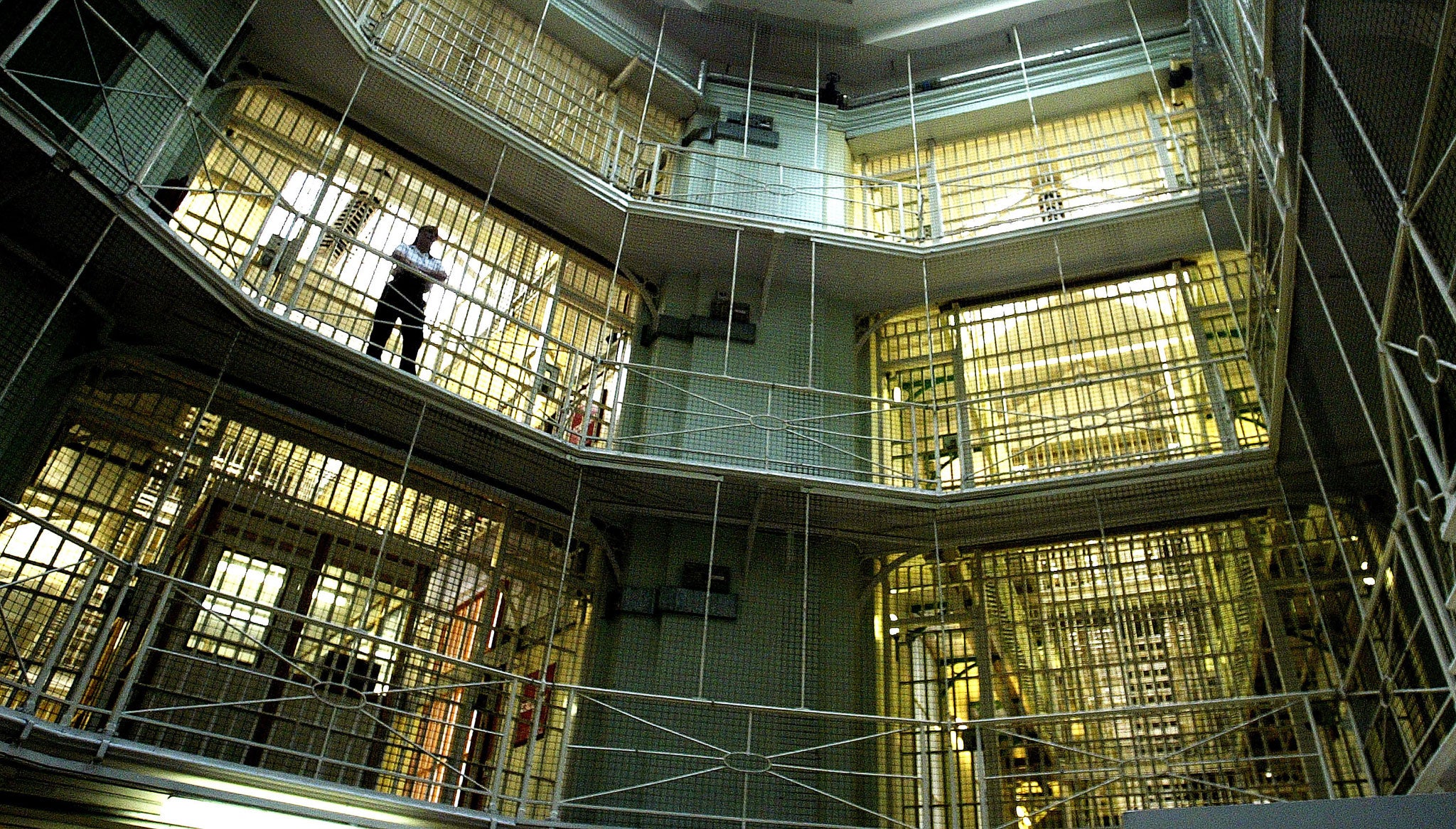Rising self-harm levels in women’s jails in UK are ‘worryingly high’, warns report
Exclusive: Study finds government failed to meet less than half of pledges it committed to in its 2018 Female Offender Strategy

The rising levels of self-harm in women’s jails in the UK are “worryingly high” with some therapeutic services cancelled during the pandemic, a new report has warned.
The study, carried out by the Prison Reform Trust, found the government has failed to meet almost half of the pledges it committed to in its 2018 Female Offender Strategy.
Researchers, who shared the report with The Independent exclusively, discovered the government has fully rolled out just 31 of 65 promises despite the strategy being published almost three years ago.
The charity warned the recent announcement of 500 extra prison cells being built in women’s jails reverses one of the strategy’s fundamental aims to reduce the female prison population - saying they would not be required if they had managed to actually implement the failed action plan.
Peter Dawson, the Prison Reform Trust’s director, told The Independent: “There is little point having a good plan if you don’t deliver it. That requires a timetable, resources and measures of success.
“None of these are in place. Instead, the government seems to have abandoned the idea that its female offender strategy can deliver its explicit and most important outcome – a reduction in the imprisonment of women. It is prepared to find £150m for new prison places to meet the cost of policy failure, but only a pittance to secure its success.
“The large majority of women are sent to prison for non-violent offences to serve sentences of less than one year. It is time for the government to double down on its aim to send less women to prison by investing in community alternatives and limiting the use of pointless short prison sentences.”
The charity warned there has been a lack of progress on tackling the specific issues black and minority ethnic women grapple with in jail.
BME women are already two times more likely to be arrested than white women, while black women are 25 per cent more likely to be handed a custodial sentence after conviction than white women.
Researchers called for more measures to be taken to create a “safe, trauma-informed environment” for women behind bars to mitigate the “worryingly high” levels of self harm in prison environments. The report notes peer-led “healing trauma” training has been halted in the coronavirus crisis but should be prioritised when possible in all women’s jails.
Earlier in the year, it emerged self-harm among female prisoners has substantially increased in the wake of the public health emergency with the number of incidents reaching a record high.
Ministry of Justice statistics showed the amount of self-harm incidents among inmates in women’s prisons across England and Wales surged by eight per cent in a year, with 12,443 cases recorded in the year to September. While this is a substantial increase from 11,482 in the 12 months before that, the amount of self-harm incidents among male prisoners has decreased by around seven per cent.
A former female prisoner, who chose to remain anonymous, previously told The Independent she encountered many women self-harming in jail - adding that she herself suffered from a great deal of “unaddressed trauma” while inside.
“I saw lots of women self-harming,” she said. “You could see their distress – it was an absence of attention for many of them and feeling like not having someone to recognise they were alive. They were isolated and isolated again. It was a sign of distress and not having anywhere else to take it.”
A previous report by the Prison Reform Trust found 80 per cent of women in jail were serving sentences for non-violent offences. Other studies have found high numbers of female prisoners have suffered domestic abuse, while many suffer from mental health issues - with campaigners frequently warning women in prison are often victims of much more serious offences than the ones they have been convicted of.
Dr Kate Paradine, chief executive of Women in Prison, told The Independent the government had “lost its way” since the Female Offenders Strategy was formulated.
She said: “Its proposal for 500 prison places flies in the face of all its own evidence that says the vast majority of women in prison do not need to be there. We know 95 per cent of children have to leave their home when their mother goes to prison and building more prison places will only shatter more lives and unnecessarily separate families.
“There is another way, one that we know works. The government can listen to the evidence, implement its own strategy and divert the £150m set aside for these new prison places into community-based services, like Women's Centres, that tackle the issues, like domestic abuse, that sweep women up into crime in the first place - keeping families together.”
The latest research, which is based on the most recent data available, shows out of the strategy’s 65 commitments, 31 have been fully achieved, 20 partially achieved, while there has been zilch progress or quantifiable implementation of 14 pledges.
But researchers noted even in instances where commitments were met via publication of guidance or instructions, there is a dearth of information showing whether it is successful.
A Ministry of Justice spokesperson said: “We want to see fewer women going to prison and are investing millions in our female offenders strategy to achieve this through community sentences, addiction treatment and women’s centres.
“Custody will always be a last resort - the new prison places will improve conditions with more single cells and greater access to education and employment, helping women to get their lives back on track.”
Join our commenting forum
Join thought-provoking conversations, follow other Independent readers and see their replies
Comments
Bookmark popover
Removed from bookmarks